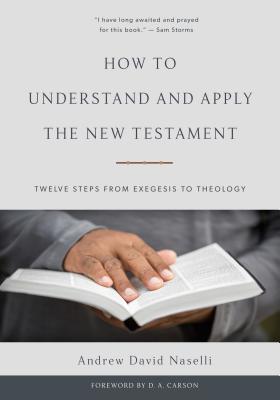What do you think?
Rate this book


384 pages, Hardcover
Published March 3, 2017
The New Testament is not a list of unrelated bullet points. It’s not pearls on a string. No, the New Testament authors argue. They assert truths and support those truths with reasons and evidence. They attempt to persuade others to share their views. Their arguments are always profound and sometimes complex. Connectives such as but, therefore, and because can be hugely important to understanding what an author is arguing. Tracing the argument is not dull. It makes your heart sing” (p. 123).
. . . the general drift of whole epistles: short passages, treated devotionally, are of course another matter. And yet the distinction is not, for me, quite a happy one. Devotion is best raised when we intend something else. At least that is my experience. Sit down to meditate devotionally on a single verse, and nothing happens. Hammer your way through a continued argument, just as you would in a profane writer, and the heart will sometimes sing unbidden (p. 123, from The Collected Letters of C. S. Lewis).
The Bible doesn’t contradict itself. So a sound principle is that we should interpret less clear passages in light of more clear passages. We shouldn’t zoom in on just one text and interpret it without reference to the rest of the Bible. That’s what heretics do (p. 16).
Don’t view English Bible translations as a competition–in which you choose one as the best and then look down on the rest as inferior in quality. Good Bible translations are incredibly helpful resources, and English readers should benefit from more than one of them. It’s both-and, not either-or (p. 60).
Grammar matters because God chose to reveal himself to us with grammar (p. 82).
Sometimes a New Testament author may write a command to prevent an error rather than to counteract a present error. When you see a command or prohibition in a text, you shouldn’t automatically assume that this reflects a present problem in the church that the author addressed (p. 172).
The beautiful thing about the Bible is that it never gets old. You can read it every day and make connections that you hadn’t made before (or remind yourself of details and connections you had forgotten!). It’s a special book–a book like no other, a book God himself wrote. And we have the pleasure of reading it at this time of salvation history: Jesus the Messiah has come, and he is coming back to consummate his rule. So read every part of the Bible in light of the whole (p. 239).
Christ-centered teaching and preaching is not eisegesis. It’s exegesis that requires biblical theology. It doesn’t creatively make stuff up to imaginatively get to Jesus. It follows themes and trajectories that are right there in the text if God gives you eyes to see them. And when you do see them, you worship God for his wisdom. He breathed out Scripture through individual men who didn’t always understand every nuance of typological trajectories to which they were contributing. And the entire finished product brilliantly coheres (p. 238).
I have no patience for suggestions that preachers need to dumb it down. Preachers need to be clear, and they need to be able to explain things in understandable ways. But human beings do not need the Bible to be dumbed down. If you think that, what you really think is that God the Holy Spirit did not know what He was doing when He inspired the Bible to be the way it is. Not only does the suggestion that the Bible is more than God’s people can handle blaspheme God’s wisdom; it also blasphemes His image bearers. People are made in the image of God. Human beings are endowed with brains and sensibilities of astonishing capacity (p. 258, from a quote from James M. Hamilton Jr.’s Text Driven Preaching: God’s Word at the Heart of Every Sermon).
I have heard it said that some men love theology more than they love God. Do not let it be possible to say that of you. Love theology, of course: but love theology for no other reason than that it is THEOLOGY–the knowledge of God–and because it is your meat and drink to know God, to know him truly, and as far as it is given to mortals, to know him whole (p. 10).